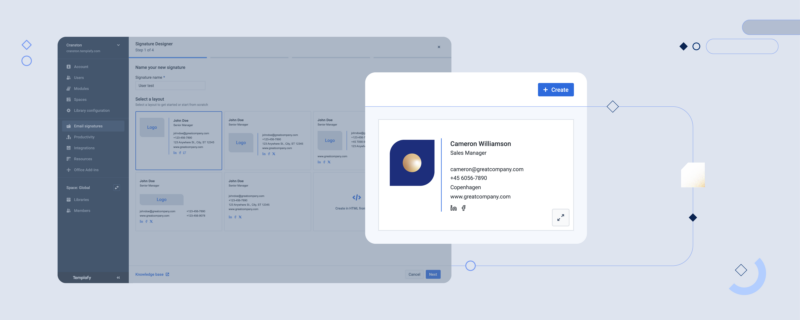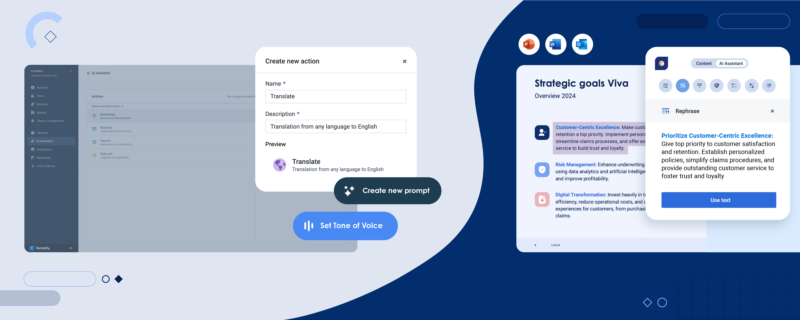From McDonald’s golden arches and Nike’s swoosh to Twitter’s now famous bluebird, these iconic images demonstrate the power a famous logo has to cut through culture and create an emotional, memorable connection between a brand and an audience.
As the first and most visible touch point of a brand, a logo is central to brand management and company identity. To stay relevant though, they need to evolve with the times. Last year, Calvin Klein, MasterCard, Instagram, AirBnb, Uber and Deliveroo were some of the many brands who tweaked or have undergone a full logo transformation to align with evolving markets and changing customer expectations.
With a logo present on everything from email signatures to client presentations, getting this brand signifier right is paramount; as explained by Alchemist logo designer Martin Christie, “It's common sense to spend time on your logo - it's the first thing that people see; it's the look of your company; and it's going to reflect what you do."
Read next: Corporate typeface: why bespoke is better for business
Managing an evolving identity
Consistency of brand identity from TV end frames to office stationery is paramount to ensuring your brand is communicated effectively. However, with an identity that is constantly evolving, knowing how to stay on brand isn’t easy.
Today’s workforce is a generation of rapid content creators. In 2014, 500 billion Microsoft Office documents were created and in 2015, 2.6 billion emails were sent and received each day – a statistic predicted to rise to 2.9 billion by 2019. In order to maintain consistent brand communications and avoid off-brand problems during the evolution of visual identity, brand managers need to be one step ahead of the rest of the business.
Whether updating old company logos, introducing a new brand typeface or executing an entire brand relaunch, here are 5 tips to make the management and implementation of a changing brand identity a success.
1. Your staff are your brand ambassadors
One of the biggest mistakes a company can make in the rebranding process is to promote changes externally before effectively communicating them internally, missing a big brand management opportunity to turn reluctant adopters into enthusiastic promoters.
Because external communications take priority in the new branding roll out, you’ll often still find some old company logos lurking in internal communications documents, intranet spaces and emails. It’s important that employees know that the rebrand is consistent and cleanly executed so that they can be confident in the change.
Just as global brands such as Starbucks, Walmart, Nokia and IBM have realized, when you launch campaigns or products internally, you create a buzz and excitement that transfers outside your office walls. As Forbes put it, “A brand positioning that best motivates the team, that they can deliver, is the only one that will really work.”
Employees should feel part of a rebrand - whether that’s by inviting participation in rebrand workshops or surveys, announcing brand updates and changes to old company logos well in advance of their consumer live date or an internal brand launch party. Writing employees in to your brand story will allow staff to feel as though their voices and opinions have been heard, making change a positive and interactive process that’s more likely to be embraced.
2. Restrict and centralize
Getting your whole company on board, excited and in line with brand developments is one thing; authorizing and implementing new changes is another. No matter how big or small a change – whether it’s a revamp of old company logos or a new sentence in an email signature – if it impacts your branding it should be controlled centrally by a small group of people.
New digital asset management and enterprise document management software allows brand managers to govern everything in real-time within a centralized dashboard. Updates to templates, digital assets, documents and emails can be published, assigned through a filter system to designated users and rolled out company-wide in a few clicks. Brand Managers can rest assured that brand changes are being implemented as they were intended and with minimal risks to brand integrity.
3. Update all internal branding content
The faster your old brand disappears, the faster your employees will adopt the new one. This means thinking beyond old company logos and considering the many touch points that make up your brand - both online and offline; email signatures, presentations, spreadsheets, contracts, stationery and office signage.
To ensure your company transitions as seamlessly as possible from the old brand world to the new, task specific team members with identifying and monitoring a list of potentially problematic or easily missed assets such as brochures, email signature campaigns or third party listings.
4. Invest in documenting brand best practice
Logos, fonts, color palettes, approved images and everything in between, needs to be included in your brand guidelines (aka your company’s brand bible). Get inspiration from the brand books of global entities such as Unicef or Medium who are northstar examples of how to make people follow brand guidelines.
Instead of static rules to follow, provide employees with branding in situ - with examples of right and wrong applications. FourSquare’s brand book for example has a great section on the Do’s and Don’t of their logo application. Importantly, like Skype, make sure your brand guidelines are as accessible to your IT department as they are your design team.
Alongside a brand handbook, create a central hub for live content that will save employees time and ensure optimum brand compliance - best practice showcases, asset library, time-saving templates and engaging content such as training videos. Alert staff when new assets are added to the library to ensure they are always aware of the latest company updates.
5. Use the right tools
Document automation software such as Templafy provides end-to-end solutions to targeting brand compliance issues and ensuring consistency across all communications.
Designed with rebrands in mind, Templafy allows you to easily validate documents with its built-in Brand & Compliance Checker. The tool identifies and highlights any off-brand problems or content including fonts, company colors, and logos. At the click of a button it offers users alternative, on-brand options to replace any off-brand content, ensuring all documents and emails are compliant with the latest company standards.
Using Templafy’s dynamic company template and content management solution, companies are able to personalize content whilst remaining on-brand, adapting documents and emails to individual employees no matter what department they’re in or language they speak. Users can also switch between designated profiles - handy when working from different office, countries or sending documents on behalf of their colleagues.




